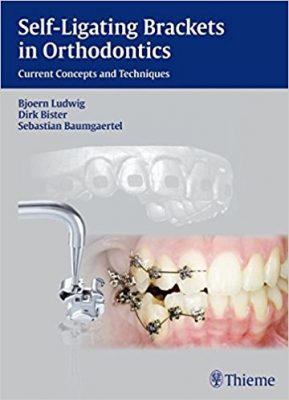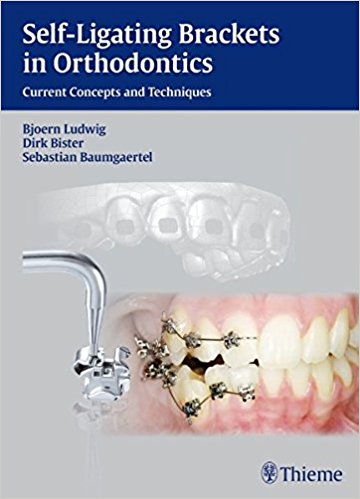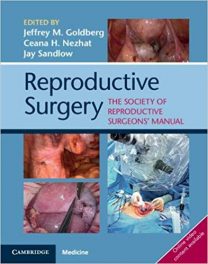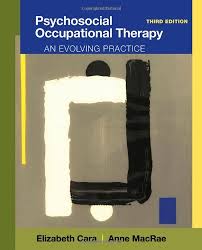 Authors and Editors: Bjoern Ludwig, Dork Bister, and Sebastian Baumgertel
Authors and Editors: Bjoern Ludwig, Dork Bister, and Sebastian Baumgertel
Publisher: Thieme – 241 pages, with 1,470 Illustrations
Book Review by: Nano Khilnani
A self-ligating (SL) bracket is defined in a Wikipedia article as “a dental brace, which generally utilizes a permanently installed, moveable component to entrap the archwire.” Self-ligating brackets have also been designed which do not require a movable component to hold the wire in place. Self-ligating braces may be classified into two categories: passive and active.
These braces were typically made from stainless steel but in some cases, are available in ceramic or polycarbonate.
The editors point out that some advantages of self-ligating braces are:
- Better differentiation from competitors
- Greater user comfort
- Easy to use
- Economical, shorter chair times
- More marketing possibilities
- Patient comfort
They write: “everything works easier and quicker” when such brackets are used, and sometimes the phrase “intelligent system” is used to describe them. But they also remark jokingly: “it seems as if the bracket at last can inform the tooth who is in charge of moving from the false to the correct position. And the tooth? It follows the new brackets obediently, friction-free, and at a breathtaking pace.”
Self-ligating brackets are not at all a recently phenomenon, as most readers may assume. As early as in the 1930s, the first experiments were conducted that fixed the wire into the slots. But the modern era of SL brackets began in the 1980s with the introduction of Speed Brackets (a sample is shown in Fig. 1.7 on page 4).
The purpose of this book is to summarize existing knowledge about self-ligating brackets as well as provide readers with a comprehensive overviews of them, including their professional experiences and the results of studies on such dental appliances.
We provide below an overview of the contents of this relatively compact handbook with an outline below:
- Basics
- The History and Development of Fixed Appliances
- Materials
- Bracket Systems
- Treatment
- Diagnosis
- Oral Hygiene
- Bonding Techniques
- Treatment
- Auxiliary Equipment and Techniques
- Retention and Stability
This is a very richly illustrated book with lots and lots of images of different types. As a matter of fact, its 1,470 illustrations within the 241 pages constitute an average of 6 images per page. There are charts, photos, sketches, tables, and x-rays. The subjects in the images are appliances, instruments, patients, products, tools, and much more.
An important part of this book is chapter 3, Bracket Systems within Part I. The coverage in this chapter consists of:
- Basic Principles
- The Various Self-Ligating Bracket Systems
- Treatment
- Summary
Each of the bracket systems shown in this chapter is discussed in terms of its:
- Advantages
- Disadvantages
- Indications
- Contraindications
There are 13 bracket systems covered in this chapter, and they are:
- Damon 3
- In-Ovation R (CAC)
- In-Ovation C (CAC)
- Opal (Ultradent)
- Opal M (Ultradent)
- Quick 2 (Forestadent)
- SmartClip (3 M Unitek)
- Clarity SL (3 M Unitek)
- Speed (Strite Industries, Ltd.
- Time 2 (American Orthodontics)
- Time 3 (American Orthodontics)
- Vision LP (American Orthodontics)
- Discovery SL (Dentauram)
This is an excellent, well-organized, compact guide on self-ligating brackets that have become one of the most popular and frequently used tools among orthodontists.
Authors and Editors:
Bjoern Ludwig, MD is affiliated with the University of Homberg / Saar, and is also in private practice in Traben-Trarbach in Germany.
Dork Bister, MD, DD is Consultant Orthodontist at Guy’s and Thomas’ Dental Hospital in London, and Addenbrooke’s Hospital in Cambridge in the United Kingdom.
Sebastian Baumgertel, DMD, MSD, FRCD ( C ) is Clinical Associate Professor in the Department of Orthodontics in the School of Dental Medicine at Case Western Reserve University in Cleveland, Ohio.
Contributors:
Franziska Bock, MD is in private practice in Fulda, Germany.
Jens Bock, MD is in private practice in Fulda, Germany.
Bettina Glasl, MD is affiliated with the University of Homberg / Saar, and is also in private practice in Traben-Trarbach in Germany.
Heiko Goldbecher, MD is in private practice in Halle, Germany
Thomas Lietz is in private practice in Neulingen, Germany.
Joerg A. Lisson, MD is Professor in the Department of Orthodontics at the University of Homberg / Saar, in Germany.







